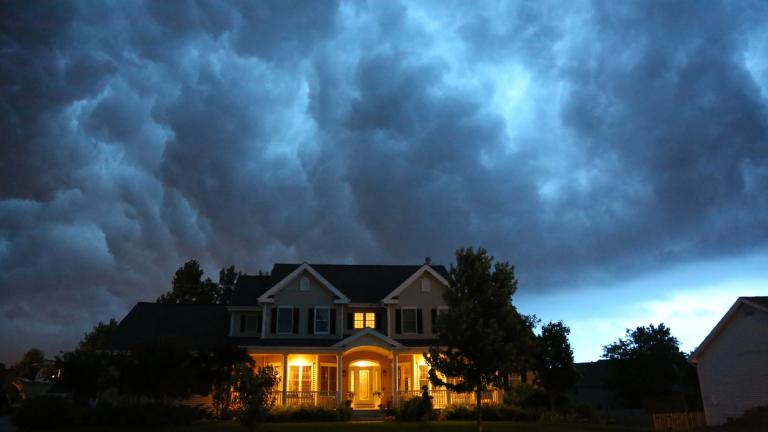On July 24, 2021, Macomb County experienced a destructive severe weather event, as the Village of Armada and Armada Township were impacted by an EF-1 tornado with winds of 105 miles per hour. Fortunately, there were no injuries during this event, but over 100 structures were damaged and recovery crews spent days removing debris and restoring utilities. The community continues to rebuild today. As we approach the one year anniversary of the storm, it’s a good time to review the basics of severe weather and what you need to know to keep you and your family safe.
Severe weather refers to the dangerous effects created by changes in the atmosphere that result in tornadoes, extreme thunderstorms or blizzards. Severe storms—often packed with heavy rains, strong winds, flooding, hail and lightning—can wreak havoc in a short time.
When severe weather happens or has the potential to, the National Weather Service issues alerts in the form of Watches and Warnings. But what do these terms mean, and what should you do when they are issued?
A WATCH means severe weather has the potential to happen. The indicators are there for an event, like a thunderstorm or tornado, to occur. When a watch is issued, bring in pets and secure anything that can blow away. If you're outside, identify the nearest secure shelter and head that way. Get off the roads if at all possible. Don't wait for the warning to occur. Many storms are fast-moving and can go from possible to happening very quickly.
A WARNING means severe weather is happening or about to happen. When a warning is issued, take immediate shelter with your family, your pets, your NOAA radio, and your emergency kit. Shelter should be in the lowest possible level of a building – such as a basement if possible. Get to an interior, windowless room – like a bathroom, closet, or underneath a stairwell. When warnings are issued, they're generally for a more localized area than a watch – covering smaller areas and, perhaps, shorter periods of time.
Due to the possibility of severe storms and tornadoes developing quickly, it is important to have a reliable outdoor warning system. There are 146 outdoor warning sirens located throughout Macomb County. It is the responsibility of the Macomb County Sheriff’s Office to activate the tornado sirens when:
- A Tornado Warning is issued by the National Weather Service
- Severe Thunderstorm Warning accompanied by winds 70 mph or greater
- Tornado and/or funnel cloud sightings that have been verified by a reputable source
In addition, all sirens are tested on the first Saturday every month at 1 p.m. Each siren is capable of covering about a one-mile radius from its location. The sirens are designed to alert residents who are outside, but residents inside their homes or buildings may hear the siren if they are close to the siren location. The system may also be activated for other incidents that require immediate alerting of our population to take certain protective actions. These events may include, but are not limited to, a Hazardous Material Spill that may impact the community and require either an evacuation or in-place sheltering. The county does not activate our system for an “all clear” notification once the threat is no longer present.
Preparation is key to staying safe and minimizing impacts during the severe weather season that is here. Twelve ways you can prepare for severe weather are:
- Sign up for emergency alerts and warnings
- Make time to discuss an emergency plan with your familySave for a rainy day
- Practice emergency drills
- Test family communication plan
- Safeguard important documents
- Plan with neighbors
- Make your home safer by bringing in items that could blow away
- Know evacuation routes
- Assemble or update emergency supplies
- Get involved in your community
- Document and insure your property
For more preparedness materials such as a fillable Family Communication Plan card or the different types of emergency alerts and warnings, visit https://www.ready.gov/plan.







